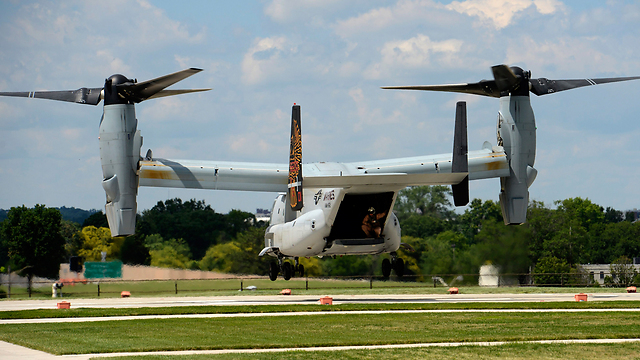
Israeli aircraft entered and left Iranian airspace in 2012 as part of a test flight for a possible attack on Iran's nuclear facility at Fordow, the Wall Street Journal reported Friday.
The report stated that "nerves frayed at the White House after senior officials learned Israeli aircraft had flown in and out of Iran in what some believed was a dry run for a commando raid on the site." As a result, the US sent a second aircraft carrier to the area and put fighter jets on alert.
The newspaper wrote a comprehensive investigative report on the crisis of confidence that developed between the US and Israel under President Barack Obama and Prime Minister Benjamin Netanyahu. As part of the investigation, intelligence officials and analysts that spoke with the newspaper revealed the Israeli flight over Iran.
One official said that the US monitored Israeli military activity and eavesdropped on Israeli bases in 2012 after they learned about the flight. New information came in every day but US officials said that some of the information was classified and US security agencies were unable to receive the majority of the messages.
The report states that US Air Force analysts came to the conclusion that Israel did not have the necessary armament and aircraft to demolish the Iranian reactors. This conclusion was transferred to the Israelis, who in response gave the Americans an outline of its own plan: transport aircraft would land in Iran with commando teams to blow the front doors of the nuclear plant at Fordow and sabotage it. Pentagon officials thought it was a suicide mission and pressured Israel to give early warning to the United States, but Israel did not commit itself to doing so.
US intelligence agencies intensified their satellite tracking of IAF planes according to the report. They found out that pilots were put on alert to attack on dark nights without moonlight. They tracked the IAF training for combat missions, including examinations of Iran's air defense system in an attempt to trick it.
The Wall Street Journal (WSJ) which cited senior White House and Pentagon officials, wrote that in 2012 there was a sense that Israel was about to attack and the White House felt that there was an urgent need to promote a diplomatic solution.
The White House, the report noted, decided to leave Prime Minister Netanyahu in the dark regarding secret negotiations that were being conducted by the US with Iran in Oman. The fear was that Netanyahu would leak the existence of the talks and undermine them. Obama's aides had very little good will towards Netanyahu who was perceived as a supporter of Republican candidate Mitt Romney during the 2012 elections. Obama left a meeting with Netanyahu with a sense that he wanted to attack on the eve of the presidential elections.
The WSJ cited defense sources in Washington who stated that Israeli officials discussed with their US counterparts the possibility of obtaining weapons for a possible attack. Topping the list was the V-22 Osprey, a plane-helicopter which fits in well with the Israeli plan to land commandos. Israeli officials were also interested in the possibility of procuring the Massive Ordnance Penetrator designed by the US to destroy bunkers at the Fordow facility.
Netanyahu wanted “somebody in the administration to show acquiescence, if not approval” for a military strike, said Gary Samore, who was Obama's top adviser on the Iran nuclear issue during his first term. But the Americans replied that this was a serious error and the administration refused to supply Israel with military equipment required for attack.
The US tried hiding from Israel the first Oman conversations, revealing them only once Hassan Rouhani became president of Iran. Samore believed that it was wrong to leave Israel out of the picture for so long. The State Department's nuclear expert Robert Einhorn said that it had a negative impact on Israel's attitude towards the talks.
It was reported that following the incident the US government decided to send a second aircraft carrier to the region and put fighter jets on alert in case an Israeli attack will led to a regional war. However, the government now admits that the exceptional flight over Iran made them draw mistaken conclusions.


















